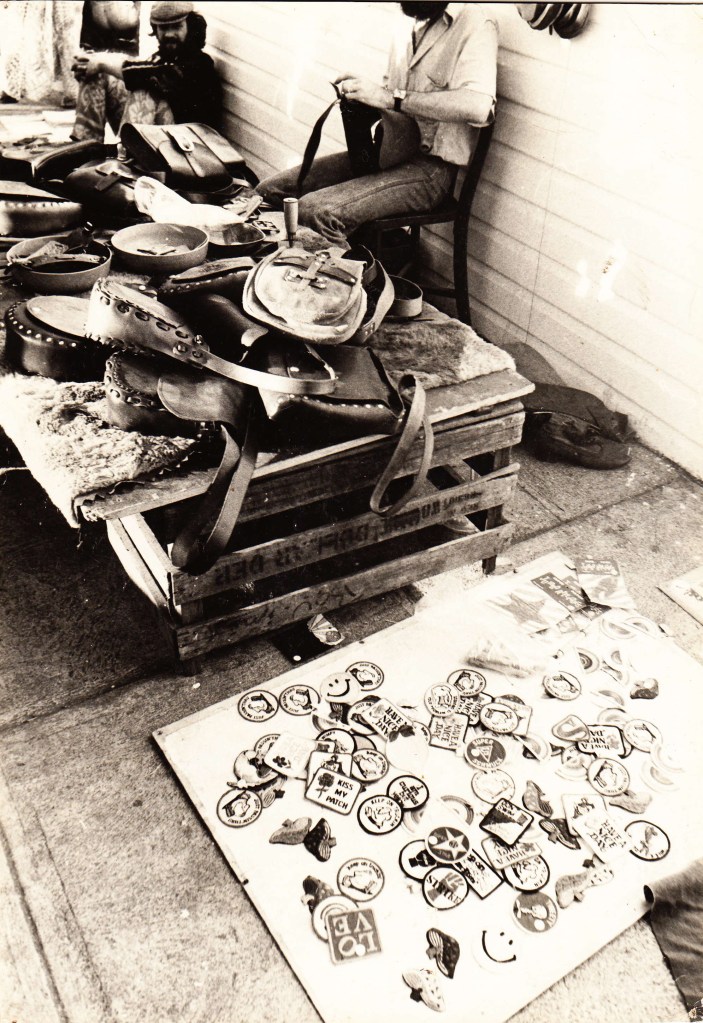The Founding of Moon Publications: Indonesia off the Map

After spending six months teaching English in wartime Cambodia, I made another $1,500 and traveled to Thailand, down to Penang while it was still sleepy enough to have Chinese opium dens. I took the ferry across the Melaka Strait to Medan, the capital of North Sumatra, my first exposure to the wild energy and excitement of Indonesia.

For weeks I traveled down this huge island and then through Java to Bali, where I took a horse cart to Adi Yasa’s in Denpasar. The only places to stay in the south part of the island at the time were a few kerosene-lit homestays in Kuta, a quiet fishing village with boats pulled up on the beach, cockfights in the back lanes, and dances held in the middle of dusty intersections. In Ubud, dogs slept in the middle of the main dirt road and the only place to eat was Oka Wati’s warung and the only place to stay was Tjanderi’s.
After six months, my Indonesian visa had expired and I was running out of money again. In May of 1972, I flew to Darwin and took rides, buses, and trains down to Cairns, Queensland, where I got a job as a gardener for the Parks and Recreation Department. One night I was writing out some travel notes in a youth hostel for some German travelers. A crusty, old New Zealand journalist came up to me: “You shouldn’t just give that information away—you should sell it.”
Two girls I knew who worked in the town library printed my six pages of notes on an old mimeograph machine. I stapled the sheets together and called it “A Traveler’s Notes: Indonesia.” I heard that there was to be a new age festival at Nimbin—Australia’s equivalent of Woodstock—in a week, so I hitched a ride on the back of a motorcycle south to New South Wales.

I sold my info sheets on a blanket on the main street next to a vendor of leather goods. I remember going back to my tent at the end of each day with my pockets weighted down with 50-cent pieces. I sold all 600 copies in three days. I knew I was onto something. In Sydney, I slept over the offset printing presses of Tomato Press on Glebe Point Road that turned the info sheets into a little booklet. Replenishing stock out of my backpack at bookstores around the city, the booklet kept on selling and kept on growing in size from 12 pages to 24 pages to 36 pages. I soon found myself becoming an information center for travel to that faraway country.
In Sydney, I made my living as a flea market vendor at Paddy’s Market and—when the cops didn’t move us—on the sidewalks at King’s Cross, selling counterculture paraphernalia like incense, puzzle rings, smoking gear, Zap Comix, and “how to grow marijuana” books, earning up to $350 Australian dollars per night. They called me the Hippie Capitalist.
One day, Tony Wheeler, the founder of Lonely Planet, walked by my blanket on King’s Cross. He had just arrived in Australia with his wife Maureen. On the sidewalk, Tony did a double-take. He asked me, “Where did you get that booklet printed?” I wrote down the address and telephone number of Tomato Press, who later printed his first publication, Asia on the Cheap (1973). The follow-up, Southeast Asia on a Shoestring, laid out in a hotel in Singapore, was the guidebook that launched Lonely Planet into the stratosphere to become the largest independently owned travel media company in the world.

After a year and a half on a visitor’s visa, with my Whole Earth Catalog on Australia’s counterculture unfinished (yet another book now gathering dust in my garage), the Australian immigration officials wrote me: “Mr. Dalton does not fulfill a national need category and his economic viability is doubtful.” The authorities were cordial, giving me a month to sell off my furniture and clean up my affairs. A long, tall Texan woman, whom I met at the Paddington flea market, gave up her teaching job and agreed to leave the country with me. Mary later became the mother of my two American daughters.
Just days before leaving, I met Tony and Maureen outside a bookstore in Sydney. Maureen gave me the name of a printer in Singapore. “They’ll print 2,000 copies of a 200-page book for $2,000 dollars,” she told me. Mary and I flew first to Papua New Guinea, then to West Irian Jaya (now West Papua, New Guinea). We visited the Baliem Valley in the central highlands, home of the Dani Tribe, then took flights west to the Spice Islands, hopped over to Sulawesi, and almost drowned in a storm at sea on a fishing boat to Borneo.
From Sarawak, we took a passenger freighter to Singapore. In less than a year, with Mary putting in $3,400 of her money and me putting in $2,500 of my money, we produced the 180-page, orange Indonesia & Papua New Guinea—a proper guide to Indonesia—in the very same room of the Palace Hotel in Singapore that the Wheelers laid out their pioneering Southeast Asia on a Shoestring. Two years later in Singapore, we came out with the black first edition of Indonesia Handbook. A publishing company was born.
